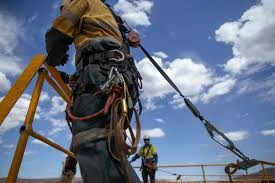


 349,500 Offered Certificates
349,500 Offered Certificates
 24/7 Online Training
24/7 Online Training
 Money Back Guarantee
Money Back Guarantee
 Fully Accredited Courses
Fully Accredited Courses

Created at: 22-02-2025 15:35
Working at Heights poses unique challenges and risks. New employees entering this environment face the critical task of mastering safety protocols and techniques. In such a high-stakes setting, mentorship programs play an essential role in bridging the experience gap, providing invaluable insights, and cultivating a culture of safety.
Mentorship fosters a collaborative learning environment where new workers can acquire the necessary skills and knowledge to navigate their duties safely. Seasoned professionals serve as mentors, sharing best practices and personal experiences that enrich the training process. Here are some key benefits of mentorship in Working at Heights safety training:
To illustrate the effectiveness of mentorship in Working at Heights training, consider the mentorship program implemented by a construction firm in Dublin. The organization paired new workers with experienced site supervisors who provided hands-on training, emphasizing safety protocols and practical techniques.
As a result of this mentorship initiative, the company observed a 40% reduction in incidents related to working at heights within the first year. Both mentors and mentees reported improved communication, with mentors expressing a sense of responsibility and pride in shaping the next generation of workers.
Here’s what some experienced professionals have to say about the power of mentorship in Working at Heights safety training:
John Murphy, Construction Site Supervisor: “Mentoring new employees is incredibly rewarding. I love seeing them grow in confidence and skill—it's like passing down a legacy of safety.”
Sarah O'Connor, Safety Officer: “With a structured mentorship program, our team has developed a shared language when it comes to safety. New workers feel empowered to speak up about their concerns.”
In addition to enhancing safety awareness, mentorship programs play a significant role in ensuring compliance with safety regulations. Experienced mentors are well-versed in local laws and standards surrounding Working at Heights training.
Organizations interested in maximizing the benefits of mentorship for Working at Heights Safety should consider the following steps:
As the data shows, mentorship programs are an investment in the future of workplace safety, particularly in high-risk environments such as Working at Heights. By pairing new employees with experienced professionals, organizations can foster confidence, enhance learning, and significantly reduce safety incidents.
To implement a mentorship program in your organization and enhance your Working at Heights Training, contact us at [email protected] today.